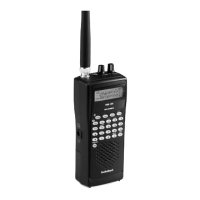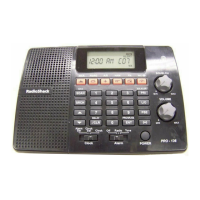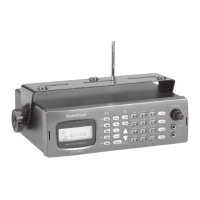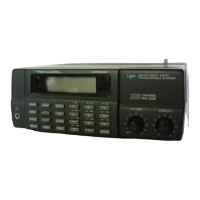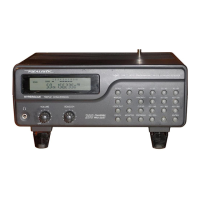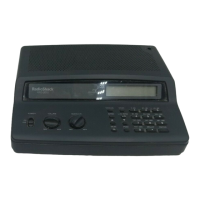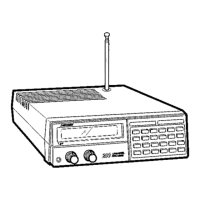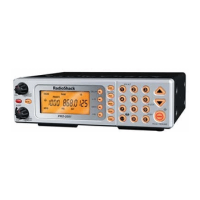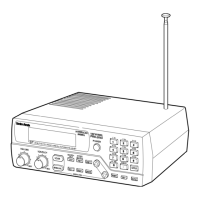Headphones
VOLUME/OFF
Turn the scanner on or off;
adjust the volume.
SQUELCH
Adjust the squelch.
Understanding your Scanner
Understanding the Display
The LCD provides important information about
the status of the radio. The top row of icons
provide status information. Beneath this row,
there are 4 rows of 16 characters each that
provide alphanumeric information such as
frequencies and object names. The last row
usually contains softkeys for F1, F2, and F3.
The Function Key (FUNC) has been pressed.
The scanner is currently receiving trunking
control channel data.
The attenuator is set for Global mode.
The attenuator is currently active.
The radio’s squelch circuit is open.
Signal meter indicating strength of the
received signal.
Battery status indicator. Comes on solid when
battery is weak, and flashes two times each
second when battery failure is imminent.
Menu position and search direction indicators.
AlphanumericInfo
AlphanumericInfo
AlphanumericInfo
F1 F2 F3
Understanding Object Oriented Scanning
Your PRO-106 scanner utilizes an entirely new
method of programming called Object Oriented
Scanning. In Object Oriented Scanning, all
“Scannable Objects” are treated the same.
Scannable Objects include talkgroups on
trunked radio systems, conventional non-trunked
frequencies, limit searches, service searches,
and Signal Stalker II configurations. All these
Scannable Objects are created, edited, grouped,
scanned and deleted using the same methods.
Scannable Objects can also be searched, filtered,
and locked out.
Scannable Objects are mapped to Scan Lists,
which can be named, enabled, and disabled.
There is even a Favorites Scan List. It is easy to
search for new frequencies or talkgroups and
add them to Scan List groups. It is also easy to
delete or deactivate objects and Scan Lists that
you do not want to listen to, including a powerful
temporary lockout mode that allows you to zero
in on activity associated with a specific incident,
then restore your desired configuration when the
incident is over.
Object Oriented Scanning is completely different
from any prior scanning receiver technology.
Accordingly, some users may find it difficult to
visualize and understand how Object Oriented
Scanning works. This may be especially true for
users who are familiar with more recent scanning
receiver technologies.
We suggest that you keep the following Object
Oriented Scanning Tenets in mind as you
proceed with your study of this manual.
Understanding your Scanner
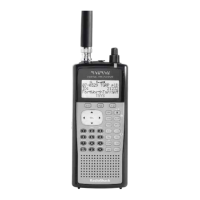
